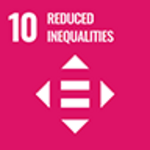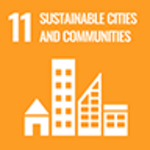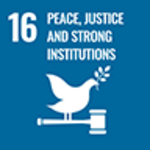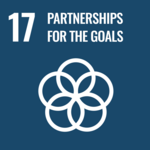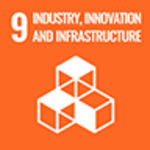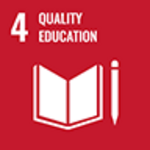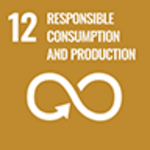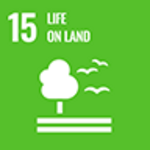
Okada: The very landscape of Hokkaido University's Sapporo campus is a stage that tells the story of the history of the people who have lived here. It is an ideal learning facility for thinking about the sustainable relationship between cultural heritage and tourism.

Associate Professor Mayumi Okada
Professor Mayumi Okada became interested in cultural heritage and tourism when she visited Israel for excavation research and came into contact with the relationship between Jerusalem, the sacred site of the world's three major religions, and the people there. Through discussions with various stakeholders, we are working to expand the potential of cultural heritage tourism to move the clock of the past held by ruins forward into the present day and improve the happiness of the people living there today.
Seeking tourism that takes advantage of the diverse values surrounding cultural heritage
When we hear about the study of cultural heritage and ruins, the image that immediately comes to mind is that of using excavated artifacts to uncover the kind of culture and society formed by the people who lived in the area in the distant past.
Okada: I understand. In fact, my motivation for pursuing a career in research was because I became interested in archeology from the perspective you just mentioned. We recognized that ``ruins are valuable historical materials for reconstructing the past.''
That all changed when I was in the Middle East for a long time doing excavation research in Israel. After staying there for several weeks, I found myself making contact with local people other than the research team, and had more and more opportunities to invite them over for tea and meals.
When I asked them about their thoughts on the ruins, I found that their opinions differed depending on whether the family was Jewish or Muslim, and even within the same religious family, opinions sometimes differed depending on the family.
I was very surprised by the diversity of values that these people found in the ruins, and I was impressed not only by the results of academic ruin surveys, which I had always regarded as absolutes, but also by the opinions of the people living there now about the local cultural heritage. I now have a new perspective that values may actually have a deep influence on a town's identity.
The field of study that considers the significance of archaeological research and the utilization of ruins and cultural heritage with a focus on modern times is called "public archeology."

Jerusalem, the ancient capital of Israel, is a holy site for Judaism, Christianity, and Islam. The Temple Mount (commonly known as the Western Wall), which is the spiritual pillar of Jews, and the Dome of the Rock and Aqsa Mosque, which were later built by Muslims, stand side by side, and the cultural heritage is not limited to just one culture and history. It teaches us that it is not something that can be achieved. (Photo by Haruo Nakano)
On July 27, 2021, the Jomon ruins in Hokkaido and northern Tohoku were registered as a World Cultural Heritage Site. Around this time, a Jomon boom began, with books, character goods, and sweets based on the Jomon period and clay figurines being produced. Will this move have any impact on university academic research?
Okada: In the sense that modern people are reinterpreting "Jomon culture" based on modern economic or religious values, I think that these developments also fall under the scope of research in public archeology.
I'm glad that an approach and channel other than the academic value of ``Jomon is cool!'' has been created, and that the number of fans in the field of ruins and archeology is increasing, and it's also interesting that new phenomena and exchanges are being born.
How did cultural heritage connect with another theme that you are interested in, tourism?
Okada: Have you ever heard the term "overtourism"? Overtourism is a situation in which excessive numbers of tourists flock to popular tourist spots, which has a negative impact on local residents, the natural environment, and the landscape.
When thinking about how to deal with overtourism, which brings in more tourists than a region can or wants to accept, the key word is "sustainable tourism town development."
In fact, this perspective is very important not only for tourism, but also when considering the preservation and utilization of cultural heritage.
Even when considered from the perspective of SDGs, the conservation and utilization of cultural heritage has social (conservation and utilization of cultural heritage and happiness of local residents), environmental (conservation and utilization of cultural heritage that is environmentally friendly), and economic aspects. We believe that it is important to have a balance between (securing funds for the preservation of cultural heritage) (sustainability is ensured).
In addition, people from both within and outside the region may rediscover the value of cultural heritage through the activity of tourism.

The key to forestry projects in Biratori Town is a system in which stakeholders can participate.
Please introduce the projects that Professor Okada is involved in that involve preserving cultural heritage and promoting cultural understanding through tourism.
Okada: In 2019, the ``Act on the Promotion of Measures to Realize a Society Where the Pride of the Ainu People is Respected'' was enacted, and the relationship between the Ainu people and Hokkaido tourism is now moving to a new stage. Each local government is working on town development and tourism promotion that utilizes Ainu culture, and in particular, Biratori Town, where many Ainu people live, is currently collaborating with the Biratori Ainu Association and the Hokkaido Forestry Bureau to promote Ainu culture using forest space. A project is underway to consider the inheritance and promotion of this tradition.
I am also participating as a project member, holding workshops to encourage dialogue among stakeholders, interviewing members of the Biratori Ainu Association individually about how they would like to use the forest, and conducting questionnaire surveys.
In Japan as well, tourism is expected to contribute to the social, cultural, and economic empowerment of indigenous peoples, and in order to realize a society in which the Ainu people can live with pride, it is necessary to create a society that can satisfy all the various stakeholders. Finding answers is never easy. It also takes time.
In the case of Biratori Town, there is a specialized department within the town hall called the Ainu Policy Promotion Division, which plays the role of receiving the voices of the Ainu community, centered on the Biratori Ainu Association, to the government and related organizations.
Having contact points like Biratori Town where local stakeholders can get involved is a major key to sustainable tourism town development.
The importance of respecting the opinions of local residents is written in the international definition of "sustainable tourism" and in the Japan Tourism Agency's "Japanese Sustainable Tourism Guidelines."
If archaeological site research involves excavating traces of past people's activities from the ground, what I am trying to do may be to unearth the feelings that are still alive in the land today. .

A restored group of traditional houses (chise) in Nibutani, Biratori Town. In the depths lies a forest that provided various resources for the Ainu's livelihood and served as a stage for their spiritual culture.
It would be great if there were more opportunities for tourists to directly hear the voices of those involved.
Okada: Speaking of Upopoi (a symbolic space for ethnic coexistence) that opened in Shiraoi Town in 2020, staff members explain the exhibits in various ways inside the facility.
For example, at the end of the explanation of traditional chise (houses) in the exhibition section ``Our Life'' at the National Ainu Museum, there is a statement that says, ``Currently, we are not traditional chise, but like everyone else.'' They live in Chise and lead a similar life.''
In addition, explanations and demonstrations about Ainu handicrafts such as wood carving and embroidery are held at the workshop, but when I asked the staff questions after the explanation, I was told that they not only had basic knowledge of handicrafts, but also that they were knowledgeable about passing on the culture. We also talked about our thoughts on it.
I feel that while valuing the traditions of Ainu culture, we are communicating that we are living in modern times.
Okada: That 's right. Even if you look at it from a Japanese perspective, Japan seen from other countries is a country with a kimono culture, but that doesn't mean that kimonos are worn every day in modern Japan.Everyone knows that this is not the case. I'm sure.
Through the voices of those involved, we will communicate how any culture is based on tradition, but has undergone repeated transformation and development, continuing into the present day. Although this movement has only just begun, I feel that we are taking the first step toward transformation.
Learn while experiencing the thoughts of indigenous peoples and the traces of history and culture that lie beneath your feet.
What do you think is the significance and role of researchers participating in tourism town development projects like Professor Okada?
Okada: What I value as a researcher is to always keep learning and to constantly collaborate with people from different fields.
Every region faces similar challenges when it comes to tourism town development, and I believe it is extremely meaningful to study examples of how other regions have resolved these issues.
If you can stock up on diverse solutions from other regions, you will be able to see what you can give back to the local governments you are involved with. As a researcher, I feel the meaning of participating in tourism town development.
Another thing is that when I think about my role, I am both a researcher and an educator. The other day, I took my students to fieldwork at Lake Akan Ainu Kotan and spoke with Ainu people who work on passing down their culture through tourism, people from the tourism association, and people in the accommodation industry.
I think the students were able to sense firsthand that even though their positions and interests may differ, all involved are trying to move in the same direction: promoting local culture and tourism.
It is an environment unique to Hokkaido that allows you to learn about history and culture in a land where indigenous people actually live and the stakeholders involved are clearly visible.
These valuable experiences will surely come in handy once you enter the workforce. Being able to feed back the learning and knowledge I have gained through the projects I am involved in into education is a great source of satisfaction for me.

A scene from Ainu Kotan training at Lake Akan. Students listen intently to the guide about the forest and the Ainu people on the Ainu culture tour.
Lastly, Mr. Okada, please tell us about the cultural heritage sightseeing spots you recommend.
Okada: You may be surprised to hear that this is a very familiar example, but the answer to that question is simply "Hokkaido University's Sapporo Campus."
The current Sakushukotoni River, which flows through the Chuo Lawn (the green area on the south side of the Sapporo campus), is a restored river that was artificially filled with water from a once-dry waterway. Many ruins have been found that show traces of people's activities in the past. It has also been pointed out that the Ishikari Ainu Kotoni Kotan was located near the International House Kita 8-jo, which is now School of Agriculture.
In recent years, a campus guide introducing the history of Hokkaido University has been published, allowing you to learn how the historical landscape of the land where Hokkaido University is now located has been formed.
When you learn about the culture and the people who lived right under your feet, you will see a different landscape than you have ever seen before. I hope that this experience will help young people become interested in the diversity of history and culture.

The Hokkaido University campus has a human ruins trail, with interpretive panels set up at various locations. You can feel the lives of the people who have lived in this area since long before Hokkaido University was founded.

Mayumi Okada Associate Professor
Affiliation: International School of Public Relations, Media and Tourism/ Center for Advanced Tourism Studies
Fields of specialization: Public archeology, cultural heritage theory, humanities/social sciences He became interested in archeology after reading a book he read as a child, and studied archeology at university and graduate school. Gradually, I became interested in the relationship between modern people and ruins, and began to study from various angles how people living today interpret and utilize history from the perspective of cultural heritage, especially objects and things related to archaeology. I've been researching since.
Hokkaido University International Public Relations Media and Tourism Academy Faculty Profile

















